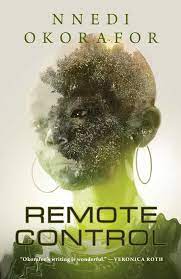As the fall school schedule begins, it once again becomes time to purchase those all-important books that will guide us through the next semester, and in some cases, to infinity and well beyond.
 It doesn’t matter if you are looking for that necessary text book or just something to hone those literary skills, you can’t go wrong with Rockets and Ray Guns: The Sci-Fi Science of the Cold War by Andrew May. Recently released from Springer Publishing, this is an ideal source of science fiction knowledge.
It doesn’t matter if you are looking for that necessary text book or just something to hone those literary skills, you can’t go wrong with Rockets and Ray Guns: The Sci-Fi Science of the Cold War by Andrew May. Recently released from Springer Publishing, this is an ideal source of science fiction knowledge.
It wasn’t long after World War II that the political tension around the globe evolved into uncertainty and fear. As the superpowers aligned ties with their closest ideologically compatible regions, the strain between differing blocs soon grew into a sociological shoving match of knowledge and strength.
Filled with insightful information on how the Cold War scientists and the sciences they dared to challenge influenced the literary works of science fiction and in turn, how the imagination of our favorite authors drove the men and women to push their own boundaries of known science.
From the origins of the Atom Bomb, to the wonder of super computers, the desires to reach the stars, and even the fear and wonders of the unknown, the evolution of these ideas and the anxiety they entice are examined.
Filled with detailed schematics and real science for both the learned and the layman, Rockets and Ray Guns is the perfect companion for any student of history and/or science. But the strength of this publication truly comes from the relationships between fact and fiction. By linking the real world with the pulp visions of popular writers of the day (and yes, top publications like The Magazine of Fantasy and Fiction and our own Amazing Stories are referenced), it becomes clearer how modern sciences and the imagination of man have pushed one another.
With a PhD from the University of Manchester in astrophysics, author Andrew May has taken his expertise to help others in both education as well as government work. Other publications by May from Springer Publishing include Pseudoscience and Science Fiction and The Telescopic Tourist’s Guide to the Moon.
Rockets and Ray Guns: The Sci-Fi Science of the Cold War may not answer the Space Force debate, but it just might give you a better perspective on how some of these ideas, regardless how outlandish or bizarre, molded our history and influenced our future. If you’re looking for just one schoolbook to cover history, science and literature, this may be the one for you.










